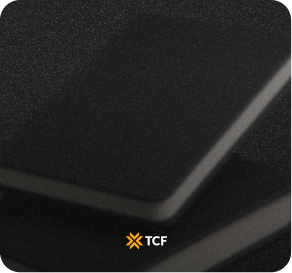By the time most creators hit “Launch,” their outcome is already decided: either their audience is primed and ready, or their page sits empty while the clock ticks.
The difference is the strategy. Every winning campaign you’ve seen had months of quiet prep behind it: a tested idea, a warmed-up list, and a launch plan timed to the minute.
This guide breaks that down. You’ll learn how to validate your product, build an audience that actually converts, and make the first 72 hours count. From your pre-launch funnel to your first backer update, every move here is built for momentum.
By the end, you’ll have a clear, modern playbook for launching in 2025: what to do, when to do it, and how to create the kind of start that pulls your campaign into Kickstarter’s spotlight fast.
[[cta2]]
Build a Solid Pre-Launch Foundation for Your Kickstarter Campaign
Before a single ad runs or a teaser drops, you need evidence that your campaign can work. The pre-launch stage is where you turn ideas into data: testing, budgeting, and setting the numbers that keep you realistic once excitement kicks in.
Validate Your Product
A prototype isn’t enough. You need proof that real people want it. Tools like Prelaunch.com make that easy. You can build a test page for your product, collect real pre-orders or email signups, and track conversion rates before launch. It’s one of the most accurate ways to measure demand early without wasting ad spend.
What makes Prelaunch powerful is the data. The platform shows how many visitors are actually ready to buy, how pricing affects interest, and which ad audiences respond best. Those insights help you make smarter Kickstarter decisions like how to set your funding goal, which early-bird tiers to test, or whether to adjust your target price before launch. If your conversion rate is strong, you can confidently scale up. If it’s weak, refine your creative and messaging before going public.
If you prefer to go manual, build a simple landing page and send targeted traffic through ads. Track sign-ups instead of views or engagement. Look for at least a few hundred leads with healthy conversion rates before you scale. That’s your green light to move from testing into full pre-launch mode.
Set a Realistic Funding Goal
Your funding goal has two sides: what you actually need and what you show. Calculate your full cost first: production, shipping, marketing, platform fees, taxes, and a small buffer. Then set a lower public goal that feels realistic and easy to reach. A campaign that hits its target early triggers confidence and boosts Kickstarter visibility.
If your total costs are around $100K, your public goal might land closer to $10K–$15K, depending on price point and audience size. That early success draws attention, while stretch goals and upsells cover the rest. Keep it data-driven: research past campaigns, check shipping rates, and base your numbers on real benchmarks, not guesses.
Outline a Timeline That Keeps You Accountable
Break your pre-launch into milestones: prototype testing, content creation, ad setup, and audience nurturing. Assign dates and stick to them. Deadlines build discipline and help your campaign go live with everything ready, not halfway there.
Show Early Credibility
People fund what feels real. Post behind-the-scenes clips, share small wins, and feature your team or workspace. Every genuine update builds trust long before your campaign page exists.
Build and Nurture Your Audience Before Kickstarter Launch
A strong launch starts long before the campaign goes live. The projects that hit their goals fast already have a crowd waiting, not discovering them for the first time.
Begin early. Use the leads from Prelaunch or your landing page and stay in touch regularly. Share design progress, quick polls, or behind-the-scenes moments. Every update makes people feel invested before the first pledge even drops.
Create a VIP space (a Discord, Facebook group, or segmented email list) for your most engaged followers. Give them early-bird access, answer questions, and ask for input. That connection builds trust and turns them into advocates who help spread the word.
Keep testing ads in the background. A small Meta budget is enough to grow your list and find out which visuals and messages convert best. The content that works here will also perform on your campaign page.
Your aim is commitment. A few thousand warm leads who already believe in your product can carry your campaign through the first 24 hours and that’s when momentum starts snowballing.
Design a High-Converting Kickstarter Campaign Page
Your campaign page does all the talking when you’re not there. It has to explain what your product is, why it matters, and why people should believe in it. Fast. If a visitor doesn’t get it within seconds, they’re gone.
Lead With Visuals That Tell the Story
Kickstarter runs on visuals. Open with a clean header image or GIF that shows your product in action. Follow with a short video that nails the basics: what it is, who it’s for, and what makes it worth backing. Keep it under two minutes. Show benefits early and skip slow cinematic intros that lose attention.
Use lifestyle photos that feel lived-in. Show people using your product. Add infographics or GIFs to explain features that need more than words.
Structure Your Page for Skimming
Most backers skim. Use bold headers, short paragraphs, and quick visual breaks. Lead with benefits, then features. If a comparison or chart helps the point land faster, add it. Make the scroll effortless.
Keep Rewards Simple and Clear
Confusing tiers kill momentum. Write each reward in plain language, show what’s included, and make the early-bird offer clear and easy to grab. Limit it by time or quantity to drive urgency, but keep it fair. Transparency builds more trust than gimmicks.
Keep reward tiers simple, but leave room for flexibility. Don’t forget about Kickstarter add-ons. They’re extra accessories, color options, or upgrades that let backers personalize their pledge without cluttering your main tiers. They also increase average pledge size without feeling pushy.
End the Page With Proof That You’ll Deliver
Close strong with social proof: media mentions, testimonials, or early user feedback. Add a production timeline that feels real, with visible steps from now to delivery. Don’t concentrate on perfection. Backers expect honesty and follow-through.
How to Launch Your Kickstarter Campaign the Right Way
Every great launch feels spontaneous, but it’s built on months of planning. If you’ve followed your Kickstarter checklist closely, this is the moment it all clicks together: emails ready, visuals live, and supporters waiting for that green “Back This Project” button.
Pick the Best Time to Launch Your Kickstarter
Tuesday mornings between 7–10 AM EST hit the sweet spot. You get prime weekday visibility, fresh inbox placement, and three solid days before weekend slowdown. Skip holidays, retail events, and big industry announcements that could steal attention.
Set Up the Countdown
The day before launch, send one short reminder to your list: “We go live tomorrow at 9AM EST. Early-bird rewards open first.” Run light teaser ads to re-engage your audience, and check every link, image, and tier on mobile. When the clock hits zero, you want no surprises.
Trigger the First-Hour Surge
Those first pledges carry weight. They build social proof and push your campaign into Kickstarter’s trending feed. Have your core supporters ready to pledge within minutes, leave comments, and share the link. That early movement sets the tone for everything that follows.
Announce Like It’s News
Treat your launch as a headline moment. Once you go live, roll out your announcement everywhere. And I mean everywhere: email, Instagram, TikTok, Facebook, LinkedIn, pre-launch groups, your high school group chat, all of it.
Keep the language clear: “We’re live on Kickstarter! Early-bird rewards are now open.” Pair it with a short product clip or photo that links straight to your page. Consistency across platforms makes the launch feel coordinated and confident.
Run Ads for Your Warm Audience
Focus entirely on your warm audience during day one. These are people who already know your product: your email list, pre-launch signups, and retargeting audiences. Run limited, targeted ads that match your campaign visuals.
The goal isn’t to scale recklessly, it’s to turn awareness into action and generate early traction that the algorithm can build on. Every pledge here strengthens your campaign’s visibility and sets up stronger results when you start expanding later.
Coordinate First-Day Shoutouts
Your first-day shoutouts decide how fast your campaign takes off. The earlier people start talking about you, the faster Kickstarter takes notice. Every influencer tag, press mention, and newsletter blast sends social proof straight to the algorithm—and backers follow the buzz.
This part can’t be improvised. Lock everything in before launch day. Influencers, affiliates, and media partners should have their posts, visuals, and live link ready to drop the moment you go public. Newsletters should be queued to hit inboxes while your early-bird rewards are still open.
When all those signals hit at once, it creates a surge: more clicks, more pledges, and higher placement on Kickstarter’s discovery feed. Miss that window, and you lose your best chance to turn excitement into momentum.
Use Social Media as Your Control Room
Social channels drive real-time energy. Post quick updates throughout the day: “50% funded in 12 hours,” “First 100 backers!” Mix formats: short videos, GIFs, behind-the-scenes photos. Encourage tagging and sharing. Every bit of activity feeds your visibility on and off Kickstarter.
Email in Two Waves
Your pre-launch list is your launch engine. The first email goes out the moment you’re live with the announcement and early-bird offer. The second, 12–18 hours later, focuses on progress and urgency: “We’re 100% funded, limited rewards left.” These two sends are your fastest path to early pledges.
Stay Active and Adjust Fast
Keep your dashboard open. Watch where traffic and pledges come from, and shift ad spend toward what’s performing best. Reply quickly to comments and messages. If a question keeps popping up, add it to your FAQ or campaign copy. Active creators build trust, and trust drives pledges.
Celebrate the Wins
When milestones hit, share it. Post a quick thank-you video or simple graphic backers can repost. These moments extend momentum and make your campaign feel alive from day one.
What to Focus On in the 48 Hours After Your Kickstarter Launch Day
The first 24 hours lit the fire. The next 48 keep it burning. This stage isn’t about new tricks—it’s about consistency, proof, and keeping your audience locked in. Most backers don’t pledge on day one. They wait to see momentum. Your job now is to show them it’s real.
Keep Momentum Visible
Don’t go quiet once the rush settles. Post progress updates like clockwork: “1,000 backers strong,” “Stretch goal unlocked,” “Featured on Kickstarter.” Every update reinforces activity and keeps your page feeling alive. Use a mix of short videos, quick graphics, and screenshots that make the growth tangible.
Keep Your Ads Running Smart
Keep doing what worked in the first 24 hours. Your warm audience isn’t done converting yet—many people wait to see progress before pledging. Keep retargeting them with updated creatives that highlight momentum (“Fully funded,” “Stretch goals unlocked,” “1,000 backers strong”). Refresh visuals, test small tweaks, and stay consistent.
Don’t rush into scaling or new audiences too early. Let the data build and focus your budget on efficiency. When traction looks stable (steady traffic, solid conversions) that’s when you can start experimenting with new lookalike or interest-based audiences.
Activate the Second Wave of Influencers
You should have this ready before launch day.
Keep it simple: updated visuals, short captions, clean links. The task is to keep fresh eyes landing on your campaign while the early buzz is still hot.
This is also your moment to fix friction points. If you saw questions or doubts pop up on day one, adjust the messaging and give influencers the clarity your audience needs.
The first wave announces your arrival. The second wave keeps you everywhere people look.
Use Momentum to Get Coverage
Now that you’re funded (or close, I hope), you’ve earned credibility. Use that as fuel to promote your Kickstarter campaign across more channels. Reach out to journalists, creators, and niche communities with updates like “Fully funded in 36 hours” or “Next stretch goal: new color unlock.”
People love covering what’s already working. Day-two and day-three coverage amplifies your visibility beyond your current bubble.
Build Credibility Through Transparency and Updates
Answer comments quickly. Post daily updates on your campaign and socials. Thank early backers, celebrate new milestones, and keep the tone real. Engaged creators make campaigns feel alive, and that energy keeps pledges rolling in.
Advanced Kickstarter Launch Tactics
These are the small but high-impact moves that separate polished campaigns from amateur ones. Each one’s designed to help you convert faster, sell smarter, and stay visible longer. Strong Kickstarter marketing lives in these details, the systems that turn a good launch into one that keeps growing every day.
1. Stack Your Traffic Sources
Never rely on a single channel. While ads and email carry the first push, layer in Reddit, Discord drops, and partner newsletters within 48 hours. Multiple simultaneous traffic sources tell Kickstarter your campaign deserves top visibility and the algorithm responds.
2. Pin and Rotate Visual Hooks
Change your campaign thumbnail and headline every few days to test which combo drives the most clicks. Kickstarter updates it instantly, and fresh visuals grab new attention without changing your core story.
3. Add a “Join Late, Still Early” Reward
Once your early birds sell out, introduce a mid-tier “thank you” version with a slightly smaller discount. It keeps urgency alive and stops pledge drop-off when people see the best deals gone.
4. Recut Your Video for Ads
Your main Kickstarter video isn’t your ad creative. Slice 6–10-second clips highlighting one irresistible feature, then use those in retargeting ads. They outperform long videos and reinforce the page visuals.
5. Warm Retargeting Stack
Create three custom audiences: site visitors, email openers, and video viewers. Run separate creatives for each. That layered warm traffic keeps ad fatigue low and conversions high through the campaign.
6. Use the Comments Section Intentionally
Post your own questions (“Which color should we unlock next?” “What features are you most excited about?”). It boosts engagement, makes the page look active, and surfaces your campaign higher in Kickstarter’s feed.
7. Repurpose Everything You Create
Every influencer clip, PR mention, and testimonial is potential UGC. Turn them into bite-sized social videos, short ad edits, or quote graphics for your emails. The more places people see the same proof, the faster trust builds.
Conclusion
A strong Kickstarter launch feels seamless from the outside, but behind it is structure, timing, and precision. You validate before you hype, build trust before you sell, and plan every move before launch day.
The campaigns that take off are built through testing, clear messaging, and relentless consistency. Every update, ad, and backer reply adds to the bigger story, one that looks professional because it is.
Now you’ve got the full framework. Use it to plan early, launch loud, and keep the fire alive once it starts. That’s how your campaign earns momentum, trust, and a place in Kickstarter’s success stories for 2025.
[[cta2]]






.png)


.png)




